Dear Annie, I recently spent about a week in the hospital due to large kidney stones. I never even knew it was there. The doctors performed a procedure called a laser lithotripsy to break it up but say the smaller stones will still have to pass. Can you tell me more about what to expect and how to help myself with herbal and natural remedies?
Wow, I am very sorry to hear of your plight. It must have been a very scary and painful process. Did you know that more than half a million people go to the emergency room every year because of problems with kidney stones? A laser lithotripsy is preformed when stones are too large to pass on their own, causing urine blockage or damage to the kidney. Luckily, herbal and natural remedies are well suited to help the body pass most kidney stones and are definitely appropriate to help you pass the smaller ones.
First let’s begin with an understanding of kidney stones in general and how they are formed. Then, we’ll get into some natural solutions and herbal remedies.
About Kidney Stones
The occurrence of urinary stones is on the rise. Today, about 9% of the those in the United States will experience a kidney stone at some point in their life, up from about 3% in the late 1990s. About 50% of the people who have had stones, will likely have a recurrence in 5 to 7 years. Men are more at risk than women, but only slightly. Other diseases such as High blood pressure, diabetes, and obesity my increase the risk.
Anatomy of Kidney Stones
Kidney stones are formed when urine becomes too concentrated in the kidneys. When this happens, excess waste, mineral deposits and certain salts gather together to create a solid crystallized mass. This mass, called a stone or calculi, continues to grow unless it passes out of the body with the urine.
To “pass,” the stone moves through the ureter and into the bladder. Once in the bladder, it easily exits the body with the flow of urine.
Because the body and our urine naturally contain the elements needed to create urinary stones, it is possible, and completely normal, to have very small stones and have no symptoms. Chemicals inside the urine prevent them from growing larger. When we have enough liquid in the system, it naturally washes them out. Larger stones, however, can be a problem.

Renal colic is the intense pain accompanying a kidney stone as it moves into and through the ureter. This is an intense pain that comes on suddenly. The extreme pain often radiates down the flank and may come in waves, radiating around the lower abdomen, into the groin and even into the upper thigh.
The process of passing a kidney stone can take from a few hours to a few days. Once stones have passed into the bladder, the pain is gone.
Additional symptoms of kidney stones may include:
Some kidney stones are a small as a grain of sand, others are as large as a pebble. In some extreme cases, stones can be as large as a golf ball. In general, the larger the stone, the more noticeable the symptoms.
Most urinary stones are made of calcium oxide, calcium phosphate and uric acid, although there are other less common mineral formations. Most of us do not know what kind of stones we have. If you can have the stones tested, do it. Knowing what the stones are made of gives better treatment options.
Medical Intervention
Surgery is sometimes needed when a stone is too large to pass on its own, if it doesn’t pass in a reasonable amount of time, when the flow of urine is blocked, if it causes damage to the kidney or if there is an ongoing urinary infection. Passing a kidney stone is excruciating. It may be the most intense pain a person ever experiences. When in doubt, go to the doctor or to the emergency room. Even though most of the time stones will pass on their own with no lingering effects, very large stones can be life-threating events.
Natural Solutions for Kidney Stones
Prevention
The best treatment is prevention.
Drink Water
Hydration is the single most important factor in the prevention and treatment of urinary calculi. Water dilutes urine, prevents it from concentrating, increases urine flow, and flushes out the kidneys, bladder, and ureters. Drinking enough water also helps wash out any infection causing bacteria.
How much water?

Some experts say everyone should drink 6 – 8 glasses of pure water per day. Others suggest taking in ½ to 2/3 of our body weight in ounces per day. For example, when a person weights 150 lbs., they should drink at least 75 ounces of water per day, that’s about 9 or 10, 8-ounce glasses.
The Weekly Flush
When you’re preparing to pass small kidney stones or have a tendency toward forming them, try the weekly flush. First observe daily fluid intake as suggested above. Then once per week, drink 1 ½ quart of water quickly (within about 15 minutes.) Doing this causes the kidneys to flush out any stones before they become problems.
Dietary suggestions to prevent kidney stones.
This is where knowing the chemical makeup of the stones comes in handy. If you don’t know, don’t worry, most of us don’t. Here are some general dietary guidelines to prevent kidney stones from forming:
- Eat an alkalizing diet to include potatoes, fruits, and fresh veggies.
- If your body or diet is highly acidic, drink alkalizing tea. (Recipe below)
- Decrease your protein intake as proteins tend to increase uric acid especially red meat.
- Avoid dairy products like milk, cheese, and yogurt.
- Avoid sodas and mineral water.
- Drink lots of water.
When you know the chemical makeup of your stones, dietary suggestions can be much more personalized.
Dietary suggestions for Calcium Oxalate stones
In addition to the suggestions above, when stones are made of Calcium Oxalate, avoid foods that contain large number of oxalates, like spinach, beets, rhubarb, parsley, and chocolate.
Calcium Phosphorus Stones, dietary suggestions
When stones are formed from Calcium Phosphorus it is best to avoid organ meats, dairy products, eggs and seafood. Also, decrease your salt intake and try to avoid foods that contain food additives with Phosphorus. Phosphorus is a common additive and preservative and can be identified by ingredients beginning with “phos” on the label. Look for it in fast foods, bottled colas, frozen foods and lunch meats.
Uric Acid Stones
Uric Acid stones are created when Uric Acid becomes concentrated in the urine, that means that the urine is too acidic. The body can build up too much Uric Acid by eating lots of red meat, poultry, eggs, and shellfish. If you have this kind of stone, try decreasing these foods. Try substituting legumes, nuts or tofu and soy as sources of protein. Also, avoid alcohol and sugary drinks as they contribute to high Uric Acid levels.
Herbs for the treatment of Kidney stones
When using herbs to help kidney stone pass more gently, we want to use Antilithic herbs to help break down or soften the stone, diuretics to increase the flow of urine and help any solid matter pass. Anti-inflammatory and analgesic herbs are used to lessen inflammation and discomfort. Antispasmodics help lessen the intense pain of renal colic, and demulcents sooth and protect mucus membranes in urinary tract.
Diuretic | Antilithic | Anti-inflammatory/ Analgesic | Demulcent | Antispasmodic |
Dandelion | Dandelion | Dandelion | Marshmallow | Kava Kava |
*Puncture Vine | *Puncture Vine | Marshmallow | Corn Silk | Cramp Bark |
Gravel Root | Gravel Root | *Puncture Vine | Burdock | Jamaican Dogwood** |
Corn Silk | Cleavers | Cleavers | Hollyhock | Corn Silk |
Cleavers | Hollyhock | Cramp Bark |
| Silk Tassel |
* Puncture Vine (Tribulus terrestris) is not a tonic plant and is not benign. It should only be taken in small quantities, as large doses can irritate the kidneys and cause dizziness. It is contra-indicated in pregnancy.
** Jamaican Dogwood (Piscidia piscdipula) should be used in drop doses only. It is a strong antispasmodic not to be used in pregnancy and lactation. Jamaican Dogwood in contraindicated with hypotension, low metabolism, and low energy states. If taken in excess it can cause nausea, vomiting and headaches.
There are many herbs to help release urinary stones. There is an old herbal myth that herbs “dissolve” stones. Some famous herbalists agree, and some don’t. Both present persuasive arguments, and it may or may not be true. It is my experience however, that some herbs do seem to soften the little hard crystals making them easier to pass. We don’t have to name the action. If it works, it works, and down through the ages, the herbs listed below have made a big difference in people’s lives.
My Go-To Herbs
Dandelion Root and Marshmallow Root (or any of the mallows I have on hand) are my go-to herbs for kidney stones and urinary tract infection. I have used this combination time again and have never been disappointed. Puncture Vine is an herb specifically indicated for urinary stones and is perfectly suited to a kidney stone removal formula. When there is a history of gout, Burdock may be added. Whereas, with a history of urinary tract infections, I like to add Corn Silk and Horsetail.
Antispasmodics are used to decrease the intense pain experienced as the stone passes through the ureter. Any of those listed above will work. When I lived in South Dakota I tended to use Cramp Bark (or a local viburnum) because it was handy and grew close by. These days, in New Mexico, I will likely use Silk Tassel as it is found easily in this area. Kava is nice, but folks can tend to overdo it. Of course, who does not love Jamaican Dogwood when applied to cramping pain? A great herb not listed on the graph is Wild Yam, an excellent herb to help decrease cramping pain, especially in smooth muscle tissue.
Dandelion (Taraxacum officinale)
Dandelion is a bitter and cooling herb with an affinity to the liver and water systems. All parts of the plant can be used as medicine. The leaves and roots are used in tea or extract as a diuretic, increasing both the amount of water and waste product in the urine. And, although the leaves have a stronger diuretic affect than the roots, both can be used to clear infection, toxins, and debris from the urinary system.
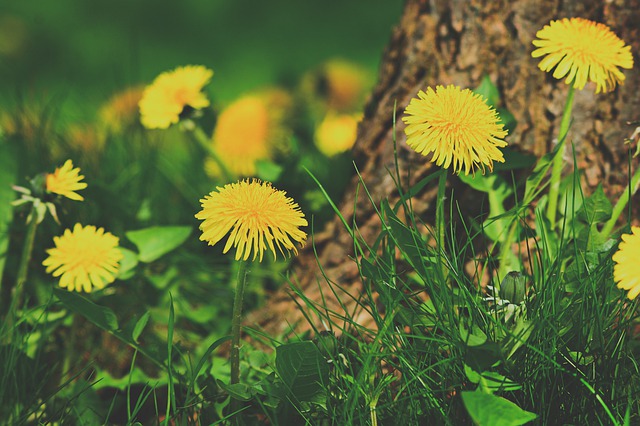
As a treatment for kidney stones, Dandelion helps soften, “dissolve” or break apart both kidney and gall stones. Its diuretic action increases the flow of urine and helps counter possible infection, while reducing inflammation and irritation. The effect is a much smoother, less painful passing of the stones.
Marshmallow (Althaea officinalis) and other Mallows
The root of the Marshmallow, Hollyhock, Globemallow and Common Mallow are all useful mucilaginous demulcents. These plants excel in their ability to sooth internal tissue, support mucus membranes, reduce inflammation and help relax painful spasms in the urinary system. My first herbal teacher, an elderly Mormon woman, called these plants “soft herbs.” She said to use them to soften hardness in the body, no matter where it is. It is also used to cool heat, soften “rough” tissue and ease irritation, inside and out.
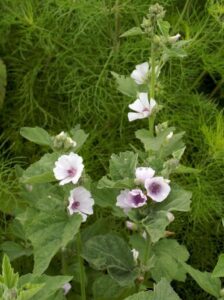
Cleavers (Galium aparine)
Cleavers is a cooling herb. It is cleansing and soothing with a special affinity for the urinary system. Cleavers supports the drainage of toxins and wastes through the urinary system. Use the above portion of the plant in a tea or tincture for a mild, persistent diuretic used to treat cystitis, kidney stones and gall stones.
Puncture Vine (Tribulus terrestris)
This are goat heads, those nasty stickers that can puncture a bicycle tire and make dogs weep. Luckily, this plant has some amazing medicinal uses. One of those is to detoxify and rejuvenate the kidneys. Puncture Vine is diuretic (increases the flow of urine), nervine (sooths over stimulated nerve tissue,) analgesic and anti-inflammatory (relieves pain and inflammation,) and antilithic (helps the body dispose of stones or prevents their formation.) Further, according to Charles Kane in his book, Medicinal Plants of the American West, “Tribulus diminishes the formation of uric acid and oxalate-based kidney stones.”

This herb, however, is not a tonic plant and is not benign. It should only be taken in small quantities, as large doses can irritate the kidneys and cause dizziness. Tribulus is contra-indicated in pregnancy. The suggested dose is ½ to 1 teaspoon powdered seed or whole plant in 8 oz of hot water 2 x per day or 30 – 40 drops of the tincture.
Corn Silk (Zia Mays)
Corn Silk is the soft, fine threads growing from the top of premature corn cobs. It is best gathered for medicinal use, just before pollination. Corn Silk is beneficial for any irritation of the urinary system especially where phosphate and uric levels are elevated. It is a relaxing diuretic, demulcent, and mucosal vulnerary, with antibacterial activity. A perfect herb to sooth painful urination, decrease inflammation of the kidney, ureter and bladder, and as a restorative for damaged tissue and mucus membranes. The herb is a good choice for adults but is outstandingly useful for children’s renal and urinary problems.
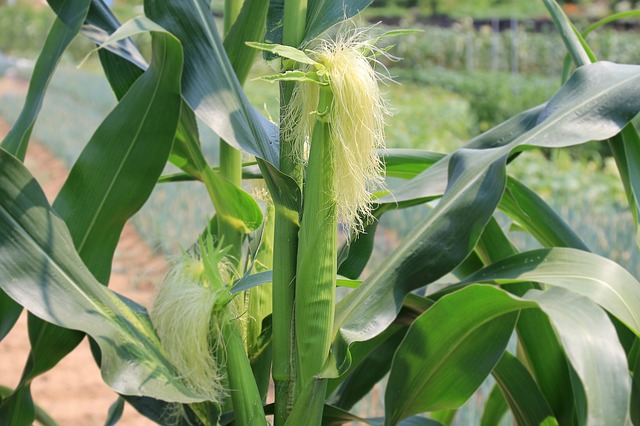
Gravel Root (Eupatorium purpureum)
Also called Joe Pye Weed, Gravel Root promotes the elimination of urinary crystals and reduces the tendency to calculi. It is especially indicated for difficult or painful urination when there is a deep, aching sensation in the pelvis, caused by urinary system problems, including the prostate. Gravel Root is most often recommended when the urine is cloudy because of high phosphates, high urates, blood in the urine, and/or an excess of solids like stones.
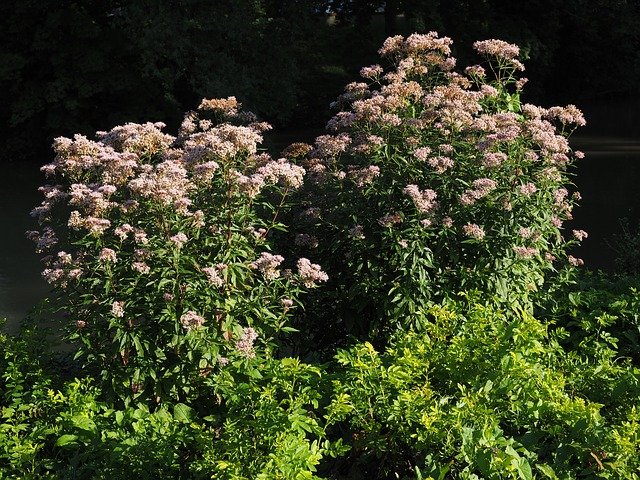
Other Suggestions for Kidney Stones
- A Castor Pack – Castor oil has a long history of breaking apart or decreasing the size of growths and for helping to relieve inflammation. Placed over the kidney or on the upper abdomen, a castor pack may help relieve pain and discomfort, soften the stone, ultimately easing its passing.
- Hot Bath – Try a hot bath with Epsom salt to relax and ease pain.
- Hot Water Over the Kidney area – Hot water does an amazing job all by itself when it comes to pain and strain. Try using the spray nozzle of the shower head to spray hot water over the kidney area.
When to go to the Doctor
Pain in the abdomen can be caused by several things. If you’re having recurring pain in your abdomen or side, go to the doctor. You want to be sure what you’re dealing with. If the pain is intense and scary, go to the doctor. It could be that the stone is too large to pass on its own, or it could be something else altogether. Doctors are great resources. Not only for treatment but for diagnosis. They can correctly diagnose the problem, let you know how large a stone is, and they may even be able to tell you its’ chemical makeup. With this information, you will be able to more easily choose the herbs and natural interventions that will be most effective for you.
Recipes to help Prevent and Relieve Kidney Stones
Alkalizing Tea
Kidney stones are more likely to form in an acidic environment. Use this tea to alkalize the system and urine.
Add Equal Parts
- Alfalfa Leaf
- Nettle Leaf
- Dandelion Leaf, root, or both
- Peppermint
- ½ part Rose Petals
Mix herbs together. Place 1 teaspoon per cup of boiling water, cover and let steep for a minimum of 20 minutes. Strain and enjoy.
Kidney Stone urinary support (one possible formula)
Tea or tincture.
- 2 parts Dandelion Root
- 1 part Marshmallow Root
- 1 part Puncture Vine
- Lemon or orange peel (optional for the tea)
Mix dried herb or use individually prepared herbal tinctures.
For the tea – add 1 tablespoon herb to 1 cup boiling water. Cover and let set for a minimum of 20 minutes. Strain and drink. Suggested dose is 4 cups per day.
For tincture the suggested dose is 60 drops 4 times per day.
Cramp Ease
To help relieve the pain of renal colic:
- 2 parts Cramp Bark (Viburnum opulus)
- 2 parts California Poppy (Eschscholzia californica)
- ½ part Jamaican Dogwood (Piscidia piscdipula)
- ¼ part Ginger Root (Zingiber officinale)
Start with 1 dropper full (about 30 drops,) may increase to 60 drops. Take 1 dose every 2 or 3 hours as needed for severe renal colic.
Suggested Products
Thank you for reading my suggestions for treating Kidney stones. I hope you found the information useful and most importantly, useable. I would love to hear your thoughts. Please use the comment section below, if you like, to share your thoughts and experiences and questions. I look forward to hearing from you.
Many Blessings
Annie
Further Reading

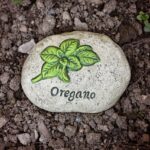


Healing the causes of suffering – A four-step model for healing
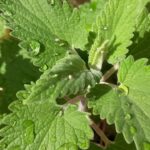
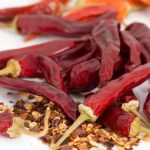
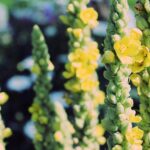
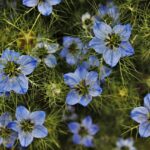
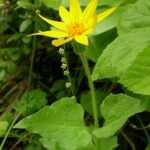


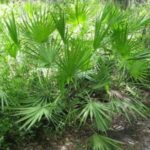









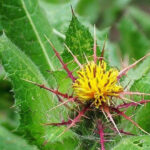
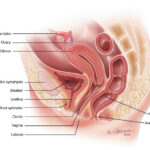





References
https://www.kidney.org/atoz/content/kidneystones
https://pressbooks.bccampus.ca/advancedanatomy1sted/chapter/clinical-conditions-2/
https://www.webmd.com/kidney-stones/kidney-stones-food-causes#2
Stage, Katie ND, RH (AHG), Herbal Treatments for Low Libido, Southwest Conference on Botanical Medicine lecture notes, 2014
Bergner, Paul, Herbal Treatments for Urinary Tract Conditions, Southwest Conference on Botanical Medicine Lecture notes, 2009
Tierra, Michael, Notes on Erectile Dysfunction Seminar, Medicines of the Earth, Herbal Conference lecture notes, 2012.
Hoffmann, David, FNIMH, AGH; Medical Herbalism, The Science and Practice of Herbal Medicine, Healing Arts Press, Rochester, Vermont 2003
Hoffman, David; The New Holistic Herbal, Element Books, Rockford MA, 1996
Kane, Charles; Medicinal Plants of the American Southwest, Lincoln Town Press, 2011.
Disclaimer
The statements and ideas presented here are not intended to diagnose, treat, cure, or prevent any disease or condition. They have not been evaluated by the FDA. All ideas presented are for the sole purpose of education. To help you take control of your own health. If you have a health concern or condition, consult a physician. We suggest that you always consult a medical doctor before modifying your diet, using any new product, drug, supplement, or doing any new exercises.
These statements and products have not been evaluated by the FDA. They are not intended to diagnose, treat, cure, or prevent any disease or condition. If you have a health concern or condition, consult a physician. Always consult a medical doctor before modifying your diet, using any new product, drug, supplement, or doing any new exercises.
Herbs taken for health purposes should be treated with the same care as medicine. Herbal remedies are no substitute for a healthy diet and lifestyle. If you are serious about good health, you’ll want to combine diet, exercise, herbals, a good relationship with your doctor and a generally healthy lifestyle. No one of these will do it alone.
This information is designed to be used as part of a complete health plan. No products are intended to replace your doctor’s care, or to supersede any of his/her advice or prescriptions.

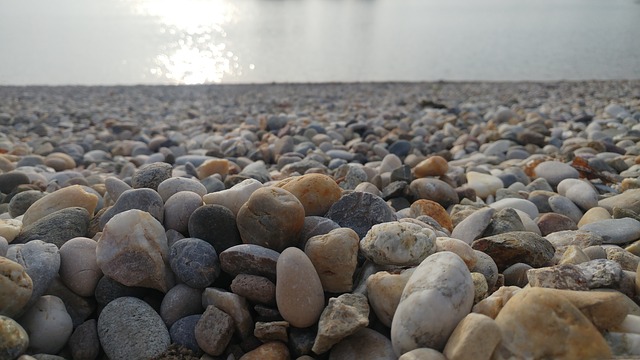

Does your site have a contact page? I’m having trouble locating it
but, I’d like to shoot you an e-mail. I’ve got some recommendations for your blog you might be interested in hearing.
Either way, great site and I look forward to seeing it grow
over time.
https://wondermentgardens.com/contact/